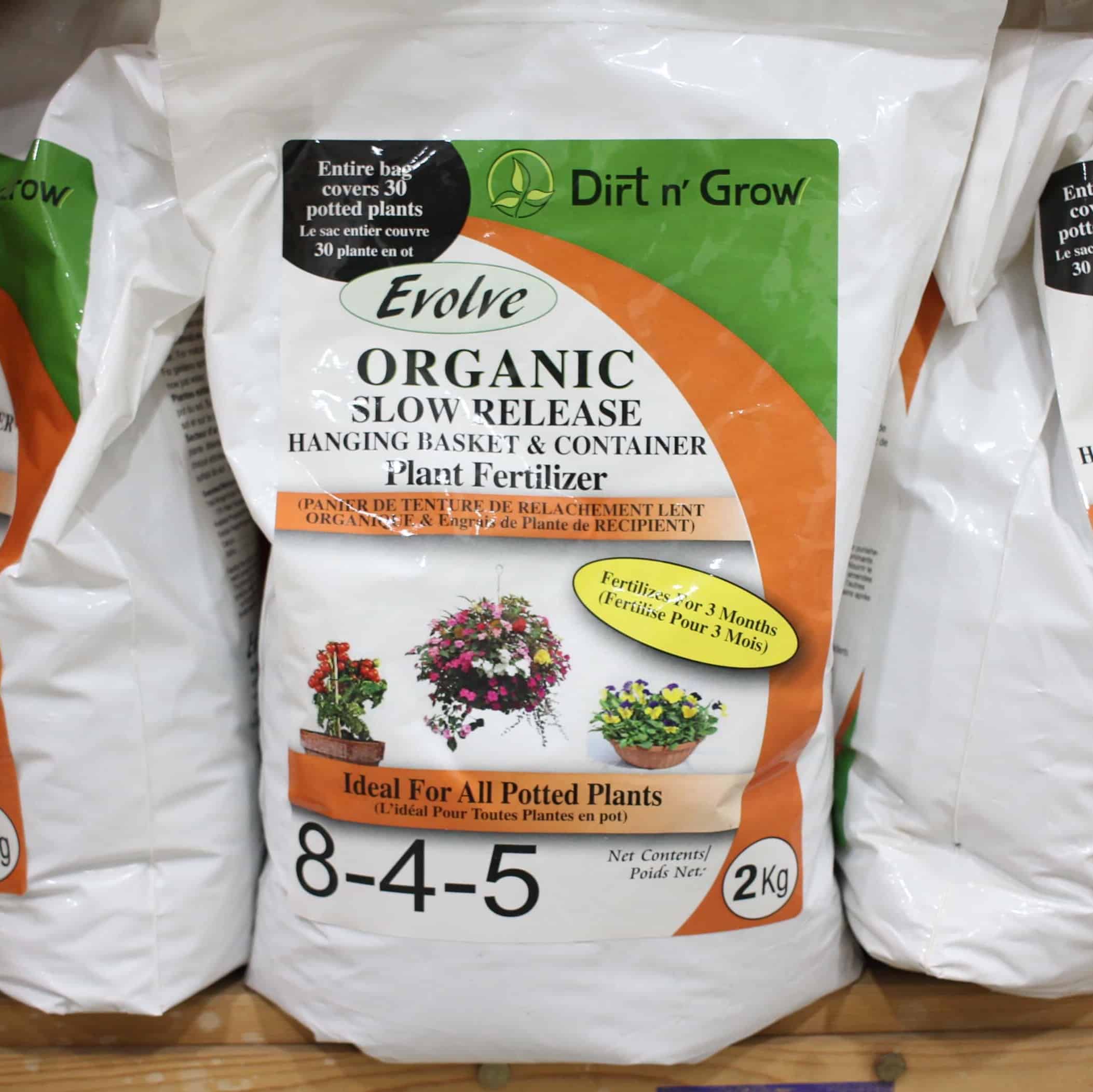

Articles
What Is A Slow Release Fertilizer
Modified: December 6, 2023
Learn all about slow release fertilizers in this informative article. Understand the benefits, application methods, and best practices for using slow release fertilizers in your garden.
(Many of the links in this article redirect to a specific reviewed product. Your purchase of these products through affiliate links helps to generate commission for Storables.com, at no extra cost. Learn more)
Introduction
A slow release fertilizer, also known as controlled-release or timed-release fertilizer, is a type of fertilizer designed to release nutrients gradually over an extended period of time. This innovative approach helps to provide a consistent supply of nutrients to plants, resulting in healthier growth and improved overall plant health.
Traditional fertilizers, such as granular or liquid fertilizers, quickly release their nutrients into the soil, making them available to plants immediately. While this can provide a rapid boost in growth, it can also lead to nutrient leaching, runoff, and potential harm to the environment.
Slow release fertilizers, on the other hand, are formulated with special coatings or materials that control the release of nutrients over an extended period. This controlled-release mechanism ensures that plants receive a steady supply of nutrients over time, reducing the risk of nutrient wastage and environmental pollution.
In this article, we will explore in detail what slow release fertilizers are, how they work, and the benefits and drawbacks of using them. We will also discuss the different types of slow release fertilizers available and provide recommendations on their application and dosage.
Whether you are a seasoned gardener looking to improve your plant’s nutrition or a beginner seeking to learn more about fertilizer options, this article will serve as a comprehensive guide to understanding and utilizing slow release fertilizers effectively.
Key Takeaways:
- Slow release fertilizers provide sustained and controlled nutrient release, promoting efficient plant growth, reducing environmental impact, and offering long-lasting results. Understanding their types, application factors, and potential drawbacks is crucial for effective utilization.
- When using slow release fertilizers, consider factors such as nutrient requirements, release rates, environmental conditions, soil type, and application timing. Customizing the fertilizer program based on these factors ensures optimal plant nutrition and maximizes the benefits of slow release fertilizers.
Read also: 9 Amazing Slow Release Fertilizer for 2024
Definition of Slow Release Fertilizer
Slow release fertilizer, also known as controlled-release or timed-release fertilizer, is a type of fertilizer that is specifically formulated to release essential nutrients to plants gradually, over an extended period of time. Unlike traditional fertilizers that release nutrients rapidly, slow release fertilizers deliver nutrients to plants slowly and steadily. This controlled-release mechanism ensures a consistent and prolonged supply of nutrients, promoting sustained plant growth and development.
The main feature of slow release fertilizers is the inclusion of a blend of nutrients coated with a protective layer. This coating acts as a barrier, regulating the release of nutrients into the soil. The nutrients are gradually released as the coating breaks down in response to factors like moisture, temperature, and microbial activity in the soil.
The controlled-release nature of slow release fertilizers offers several advantages over conventional fertilizers. First, it provides a continuous supply of nutrients to plants, reducing the risk of nutrient deficiencies and promoting overall plant health. Second, slow release fertilizers minimize the chance of nutrient leaching and runoff, as the nutrients are released in sync with the plant’s requirement. This translates to improved nutrient utilization and decreased environmental impact. Lastly, slow release fertilizers require less frequent applications compared to traditional fertilizers, saving time and effort for gardeners and farmers.
It’s worth noting that slow release fertilizers are available in various formulations, including granules, pellets, and capsules. Each formulation may have a different coating material or mechanism to control nutrient release. This allows for customization based on specific plant requirements and soil conditions.
In summary, slow release fertilizers are designed to provide a sustained and controlled release of nutrients to plants. Their unique formulation ensures a continuous supply of nutrients, reduces environmental impact, and optimizes plant growth and health.
How Does Slow Release Fertilizer Work?
Slow release fertilizers work through a controlled-release mechanism that allows nutrients to be released gradually into the soil, providing a steady supply to plants over an extended period of time. This mechanism ensures that plants receive a consistent and balanced nutrient uptake, promoting healthier and more sustainable growth.
The key component of slow release fertilizers is the coating or matrix that surrounds the nutrient granules. This coating is designed to regulate the release of nutrients based on various factors such as temperature, moisture, soil microbial activity, and plant demand. The coating is typically made of different materials, such as polymers, resins, sulfur, or sulfur polymer combinations.
Once the slow release fertilizer is applied to the soil, the release mechanism is triggered. Factors such as moisture, temperature, and microbial activity can break down the coating, allowing the nutrients to gradually diffuse into the soil. In some cases, the coating may have pores or channels that control the rate of nutrient release.
The release of nutrients from slow release fertilizers is influenced by the principle of diffusion. As the nutrients move from an area of high concentration within the granule to an area of lower concentration in the surrounding soil, they become available for uptake by plant roots.
The release rate of nutrients from slow release fertilizers can vary depending on several factors. These factors include the formulation of the fertilizer, soil temperature, moisture level, microbial activity, and the crop’s nutrient requirements. Warmer temperatures, higher soil moisture, and increased microbial activity can accelerate the breakdown of the coating, resulting in a faster release of nutrients. Conversely, colder temperatures, drier soil conditions, and lower microbial activity can slow down the release.
One of the advantages of slow release fertilizers is their ability to deliver nutrients in sync with the plant’s needs. The release of nutrients is gradual and synchronized with the growth stages of the plant. This prevents nutrient excess and deficiency, resulting in balanced nutrition and improved plant health.
Overall, slow release fertilizers offer a more efficient and sustainable approach to nutrient management. By providing a controlled and extended release of nutrients, they minimize nutrient wastage, reduce environmental pollution, and promote long-term plant growth and vitality.
Benefits of Using Slow Release Fertilizer
Using slow release fertilizer in gardening and agricultural practices offers numerous benefits that contribute to the overall health and productivity of plants. Let’s explore some of the key advantages of using this type of fertilizer:
1. Enhanced Nutrient Efficiency:
Slow release fertilizers provide a steady and controlled release of nutrients, ensuring that plants receive a consistent supply over an extended period. This promotes efficient nutrient uptake, minimizing nutrient wastage and maximizing plant utilization. It reduces the risk of nutrient leaching and runoff, which can contribute to environmental pollution.
2. Sustained Plant Growth:
The slow and continuous release of nutrients from slow release fertilizers helps support sustained plant growth. As essential nutrients are gradually released, plants are provided with a constant supply, ensuring they have what they need for healthy development. This leads to stronger root systems, enhanced foliage growth, improved flowering, and increased fruit production.
3. Reduced Labor and Applications:
Unlike traditional fertilizers that require frequent applications, slow release fertilizers have a longer effectiveness period. This results in reduced labor and fewer fertilizer applications. Gardeners and farmers can save time, effort, and resources by applying slow release fertilizers less frequently, ultimately leading to cost savings.
4. Environmental Sustainability:
Slow release fertilizers contribute to environmental sustainability by minimizing the risk of nutrient pollution. With their controlled-release mechanism, these fertilizers release nutrients in sync with plant demand, reducing the potential for excess nutrients to leach into groundwater or runoff into streams and rivers. This helps protect water quality and supports a sustainable ecosystem.
5. Enhanced Soil Health:
By delivering nutrients to plants over time, slow release fertilizers improve soil health and fertility. The gradual release of nutrients encourages microbial activity, which enhances nutrient cycling and improves soil structure. This, in turn, promotes better water infiltration, root penetration, and nutrient retention in the soil.
6. Long-Lasting Results:
Slow release fertilizers provide long-lasting results compared to traditional fertilizers. The nutrients are released gradually, ensuring that plants receive consistent nourishment throughout their growth cycle. This longevity reduces the need for frequent fertilization and allows for a more sustainable and efficient approach to plant nutrition.
Overall, the benefits of using slow release fertilizer include enhanced nutrient efficiency, sustained plant growth, reduced labor and applications, environmental sustainability, improved soil health, and long-lasting results. Incorporating slow release fertilizers into gardening and agricultural practices can greatly contribute to the overall success and sustainability of plant cultivation.
Types of Slow Release Fertilizer
There are several types of slow release fertilizer available on the market, each with its own unique formulation and mechanism of nutrient release. Understanding the different types will help you choose the most suitable option for your specific needs. Let’s explore some of the common types of slow release fertilizers:
1. Polymer-Coated Fertilizers:
One of the most widely used types of slow release fertilizers is polymer-coated fertilizers. In this type, the fertilizer granules are coated with a polymer layer that controls the release of nutrients. The thickness of the coating determines the release rate, which can range from a few weeks to several months. Polymer-coated fertilizers provide a consistent nutrient release and can be tailored to specific nutrient ratios for different crops.
2. Sulfur-Coated Urea (SCU):
Sulfur-coated urea (SCU) fertilizers consist of urea granules coated with a layer of elemental sulfur. The sulfur coating acts as a barrier, controlling the release of nitrogen over time. As the coating oxidizes, it gradually breaks down, releasing nitrogen into the soil. SCU fertilizers offer a slow release of nitrogen, making them an excellent choice for crops that require a steady and prolonged supply of this nutrient.
Read also: 12 Best Time Release Fertilizer for 2024
3. Organic Slow Release Fertilizers:
Organic slow release fertilizers are derived from natural sources such as composted manure, bone meal, fish meal, or cottonseed meal. These fertilizers release nutrients slowly as the organic matter breaks down, providing a gradual and long-lasting nutrient supply. Organic slow release fertilizers contribute to soil health by improving its structure, enhancing microbial activity, and promoting nutrient cycling.
4. Nutrient-Loaded Resins:
These slow release fertilizers consist of nutrient-loaded resin capsules or beads. The nutrients are embedded within the resin matrix, and their release is dependent on factors like temperature, moisture, and soil microbial activity. Nutrient-loaded resins offer precise control over nutrient release rates and are commonly used in controlled environmental agriculture systems.
5. Liquid Slow Release Fertilizers:
Liquid slow release fertilizers are a convenient option for those who prefer liquid fertilizers. These formulations are designed to release nutrients gradually over time, providing a continuous supply to plants. Liquid slow release fertilizers are typically applied through irrigation systems or foliar sprays, making them suitable for both soil-based and hydroponic cultivation.
It’s important to note that the choice of slow release fertilizer will depend on factors such as the specific crop requirements, soil conditions, climate, and target release duration. Understanding the different types of slow release fertilizers will help you select the most appropriate option to meet your plant’s nutritional needs and achieve optimal growth and health.
Factors to Consider When Using Slow Release Fertilizer
When using slow release fertilizer, there are several important factors to consider to ensure its effectiveness and maximize its benefits. Understanding and addressing these factors will help you make informed decisions and achieve optimal plant nutrition. Let’s explore some key factors to consider when using slow release fertilizer:
Read more: What Is Quick Release Toilet Seat
1. Nutrient Requirements:
It’s crucial to assess the nutrient requirements of your plants before selecting a slow release fertilizer. Different crops have varying nutrient needs at different growth stages. Conduct soil tests or consult with agricultural experts to determine the specific nutrient deficiencies and the ideal nutrient ratios for your plants.
2. Release Rate:
The release rate of a slow release fertilizer determines how quickly the nutrients are released into the soil. Consider the duration of nutrient release required for your plants and select a fertilizer with an appropriate release rate. Some slow release fertilizers release nutrients over a few weeks, while others can provide nutrition for several months.
3. Environmental Conditions:
The environmental conditions, including temperature, moisture, and soil microbial activity, can affect the performance of slow release fertilizers. Consider the climate and weather patterns in your region to choose a fertilizer that adapts well to the conditions. Also, be aware that higher temperatures and moisture levels can accelerate nutrient release, while colder temperatures and drier soil conditions may slow it down.
4. Soil Type and pH:
The soil type and pH can influence the availability and uptake of nutrients. Different slow release fertilizers may perform better in specific soil types or pH ranges. Understand your soil characteristics and select a fertilizer that suits the soil conditions. Adjusting the soil pH, if necessary, can also enhance nutrient availability and improve fertilizer performance.
Read more: What Is Slow Juicer
5. Application Timing:
Applying slow release fertilizer at the right time is crucial for effective plant uptake. Consider the growth stage of your plants and apply the fertilizer at the appropriate time. Some slow release fertilizers are specifically designed for pre-planting application, while others are suitable for both pre-planting and top-dressing during the growing season.
6. Overlapping Nutrient Release:
If you plan to use slow release fertilizers alongside other fertilizers, consider their nutrient release characteristics. Ensure that the release periods overlap to maintain a continuous nutrient supply throughout the plant’s growth cycle. Avoid using slow release fertilizers in combination with conventional fertilizers that have a rapid release rate, as this may lead to nutrient imbalances or wastage.
By considering these factors when using slow release fertilizer, you can customize your fertilizer program to meet the specific needs of your plants. Attention to nutrient requirements, release rate, environmental conditions, soil type and pH, application timing, and proper nutrient release overlap will help ensure optimal plant nutrition and maximize the benefits of slow release fertilizers.
Application and Dosage Recommendations
Proper application and dosage of slow release fertilizer are crucial to ensure optimal plant nutrition and avoid nutrient imbalances. Here are some general guidelines and recommendations for effectively applying and determining the dosage of slow release fertilizer:
1. Read the Instructions:
Always read and follow the manufacturer’s instructions on the slow release fertilizer product. They will provide specific guidelines on the recommended application rates, timing, and techniques for the particular product you are using. Following these instructions will help ensure correct and effective fertilizer application.
Read more: What Is Dap Fertilizer
2. Assess Soil Nutrient Levels:
Prior to applying slow release fertilizer, assess the nutrient levels in your soil through soil testing. Soil testing will provide valuable information on nutrient deficiencies or excesses, allowing you to tailor the fertilizer application to your plant’s specific needs. It will help you determine the appropriate nutrient ratios in the slow release fertilizer.
3. Consider Plant Nutrient Requirements:
Understand the specific nutrient requirements of your plants at different growth stages. This will help you determine the suitable nutrient ratio and adjust the dosage of the slow release fertilizer accordingly. Different plants have varying needs, so it’s important to consider their unique nutrient requirements for optimal growth and development.
4. Calculate the Application Rate:
Calculate the appropriate application rate based on the nutrient content of the slow release fertilizer. The nutrient content is typically provided on the fertilizer packaging as a percentage (e.g., N-P-K ratio). Determine the amount of fertilizer needed per unit area by considering the desired nutrient level and the target application rate per unit area recommended by the manufacturer.
5. Distribute Evenly and Incorporate Into the Soil:
When applying slow release fertilizer, ensure an even distribution over the plant root zone to avoid nutrient concentration variations. Whether you are broadcasting or applying in rows, strive for uniform coverage. After application, lightly incorporate the fertilizer into the soil to enhance nutrient release and prevent nutrient runoff. Follow the recommended depth of incorporation provided by the manufacturer.
Read more: How To Release A Kegco Kegerator
6. Adjust Based on Plant Response:
Monitor plant response to the slow release fertilizer and make adjustments as needed. If you notice signs of nutrient deficiency or excess, such as stunted growth or leaf discoloration, consider adjusting the dosage or nutrient ratio of the fertilizer. Periodic soil testing can also help evaluate nutrient levels and guide any necessary modifications.
Remember, the recommended dosage and application rate may vary depending on factors such as plant type, soil conditions, and climate. Therefore, it is essential to refer to the specific instructions provided by the fertilizer manufacturer and make any necessary adjustments based on the unique needs of your plants.
By following these application and dosage recommendations, you can ensure effective and efficient usage of slow release fertilizer, providing your plants with the nutrients they need for healthy growth and optimal productivity.
Potential Drawbacks of Slow Release Fertilizer
While slow release fertilizers offer numerous benefits, there are some potential drawbacks to consider when using them. Understanding these drawbacks will help you make informed decisions and mitigate any potential challenges that may arise. Here are some of the potential drawbacks of using slow release fertilizer:
1. Slow Initial Nutrient Availability:
Slow release fertilizers, as the name suggests, release nutrients gradually over time. This means that there may be a delay in the availability of nutrients to plants, especially during the initial stages after application. This slow availability can impact the early growth and establishment of plants that require an immediate nutrient boost.
2. Limited Control Over Release Rate:
The release rate of nutrients from slow release fertilizers is influenced by environmental factors such as temperature, moisture, and microbial activity. While this controlled-release mechanism is beneficial in most cases, it also means that you have limited control over the timing and rate of nutrient release. Environmental conditions outside of your control can accelerate or decelerate the release, affecting the nutrient availability to plants.
Read more: When Was Corelle Wildflower Released
3. Specific Nutrient Targeting:
Slow release fertilizers are typically formulated to release a specific blend of nutrients. In some cases, the nutrient ratio may not precisely match the requirements of your plants or the deficiencies in your soil. This may result in imbalances or suboptimal nutrient availability for specific plant species or growth stages. Soil testing and customization of nutrient blends may be necessary to address this issue.
4. Cost Considerations:
Slow release fertilizers generally tend to be more expensive than traditional fertilizers. The complex manufacturing process and specialized coatings contribute to the higher cost. It’s important to consider the cost-effectiveness of slow release fertilizers based on your specific application needs and expected outcomes. A cost-benefit analysis can help determine if the potential benefits outweigh the higher cost.
5. Limited Nutrient Release Duration:
While slow release fertilizers provide prolonged nutrient release compared to traditional fertilizers, the duration of nutrient release is still finite. Depending on the specific product, slow release fertilizers may span several weeks to a few months. For longer-term crop growth, additional fertilizer applications may be required to provide ongoing nutrient supply beyond the capacity of the slow release fertilizer.
6. Environmental Considerations:
While slow release fertilizers are designed to minimize nutrient leaching and runoff, improper application or excessive use can still contribute to environmental pollution. It is important to follow the recommended application rates and avoid overapplication, especially in sensitive ecosystems or areas prone to water contamination. Proper management practices should be implemented to ensure responsible and sustainable fertilizer use.
Despite these potential drawbacks, slow release fertilizers remain a valuable tool for providing sustained and controlled nutrient availability to plants. By considering these limitations and taking appropriate measures, you can maximize the benefits while minimizing the potential challenges associated with using slow release fertilizers.
Read more: What Is Potash Fertilizer
Conclusion
Slow release fertilizers offer a sustainable and efficient approach to plant nutrition, providing a steady and controlled release of nutrients over time. Their unique formulation and release mechanisms help to optimize nutrient uptake, minimize environmental impact, and promote healthy and sustained plant growth.
Throughout this article, we have explored the definition and benefits of slow release fertilizers, understanding how they work and their advantages over traditional fertilizers. We have also discussed the various types of slow release fertilizers available, factors to consider when using them, and application and dosage recommendations.
While slow release fertilizers offer numerous benefits, such as enhanced nutrient efficiency, sustained plant growth, reduced labor, and environmental sustainability, there are also potential drawbacks to consider. The slow release of nutrients, limited control over release rates, and specific nutrient targeting can present challenges that require careful management and customization.
To effectively use slow release fertilizers, it is essential to consider factors such as plant nutrient requirements, release rates, environmental conditions, soil type and pH, application timing, and proper nutrient release overlap. This will help optimize plant nutrition and achieve the desired results.
In conclusion, slow release fertilizers are invaluable tools for promoting healthy plant growth while minimizing environmental impact. By taking into account the specific needs of your plants, soil conditions, and desired timing, you can harness the benefits of slow release fertilizers to cultivate thriving gardens, lush lawns, and bountiful crops.
Remember to always read and follow the instructions provided by the manufacturer and monitor plant response to make any necessary adjustments along the way. By using slow release fertilizers responsibly and in conjunction with other best practices in plant care, you can create a sustainable and thriving environment for your plants.
Frequently Asked Questions about What Is A Slow Release Fertilizer
Was this page helpful?
At Storables.com, we guarantee accurate and reliable information. Our content, validated by Expert Board Contributors, is crafted following stringent Editorial Policies. We're committed to providing you with well-researched, expert-backed insights for all your informational needs.
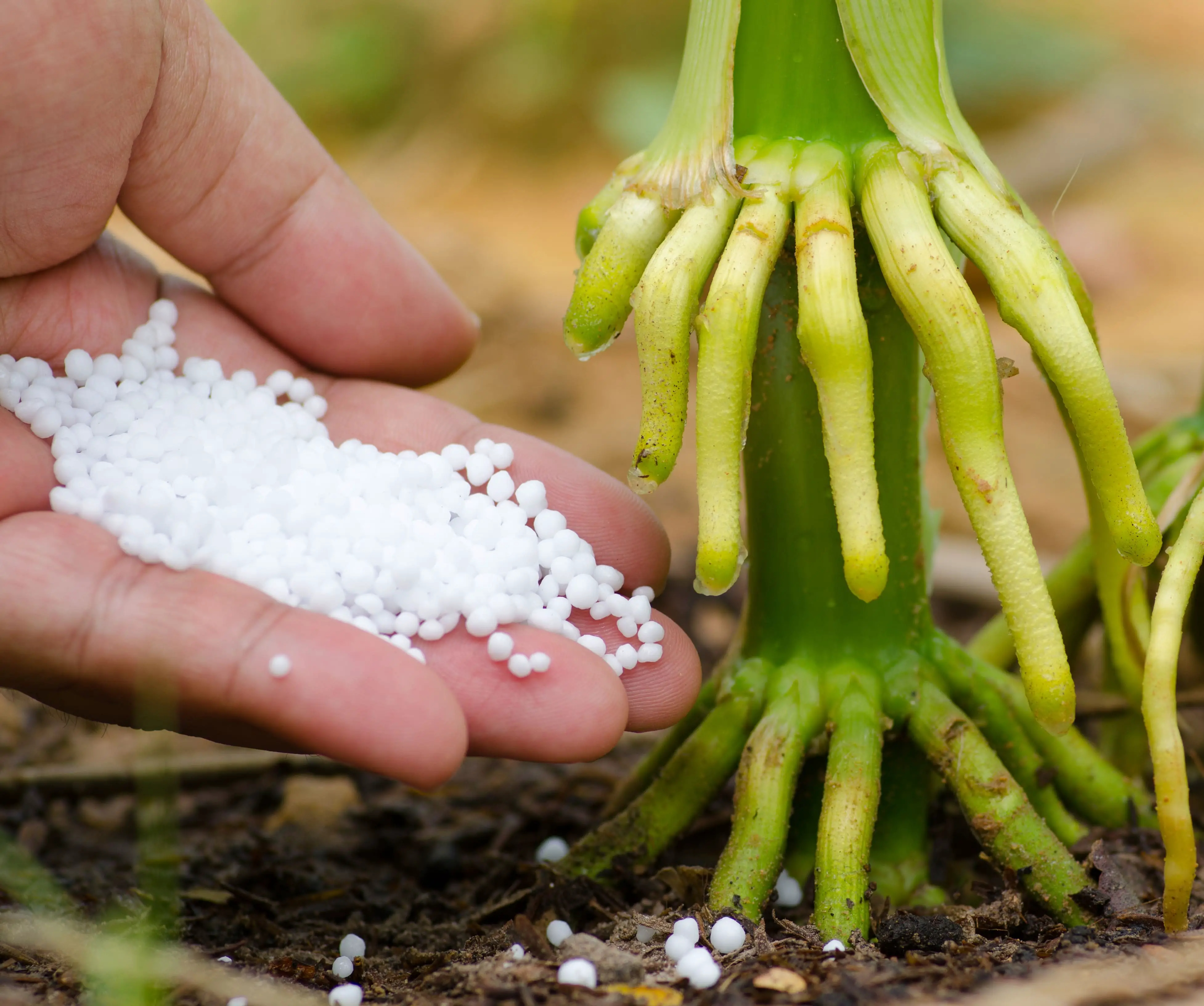
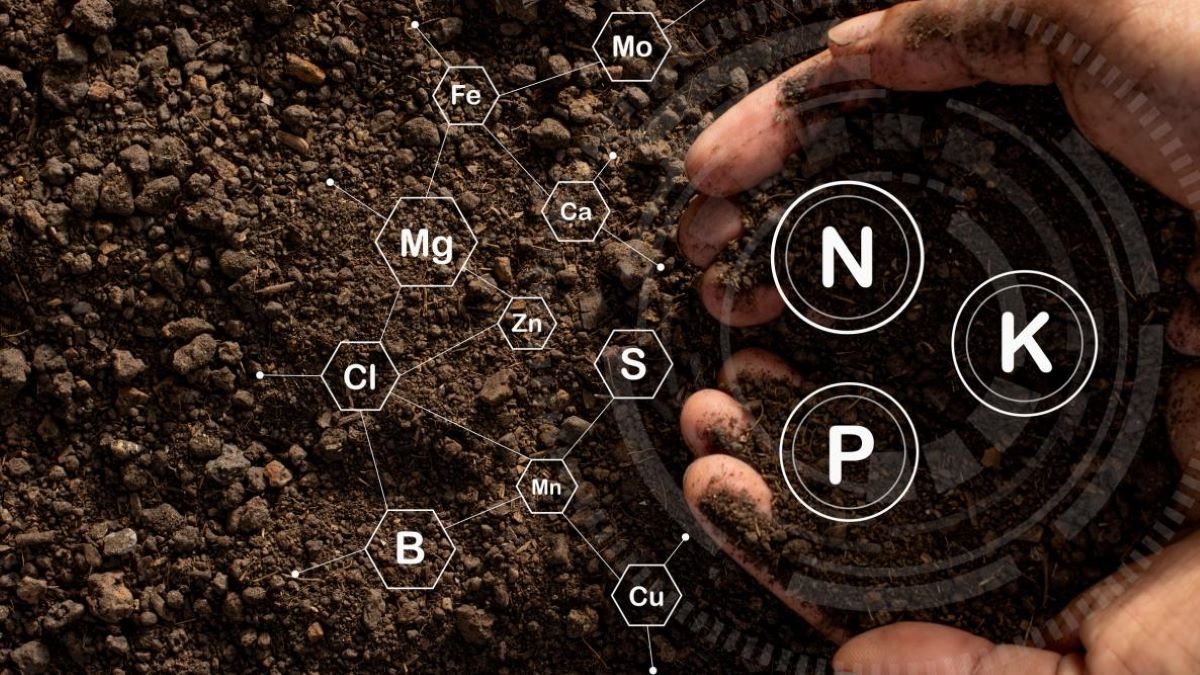
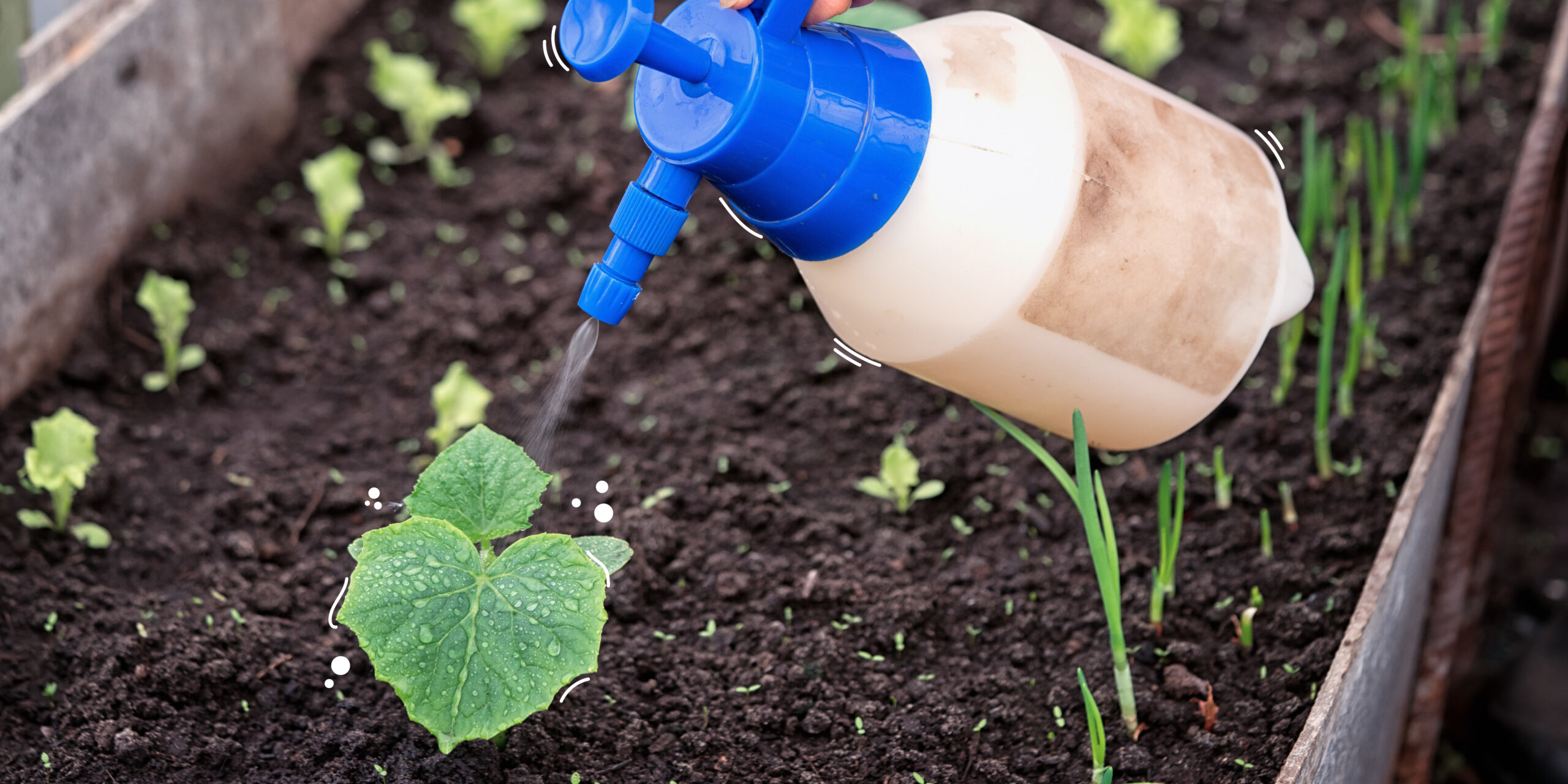
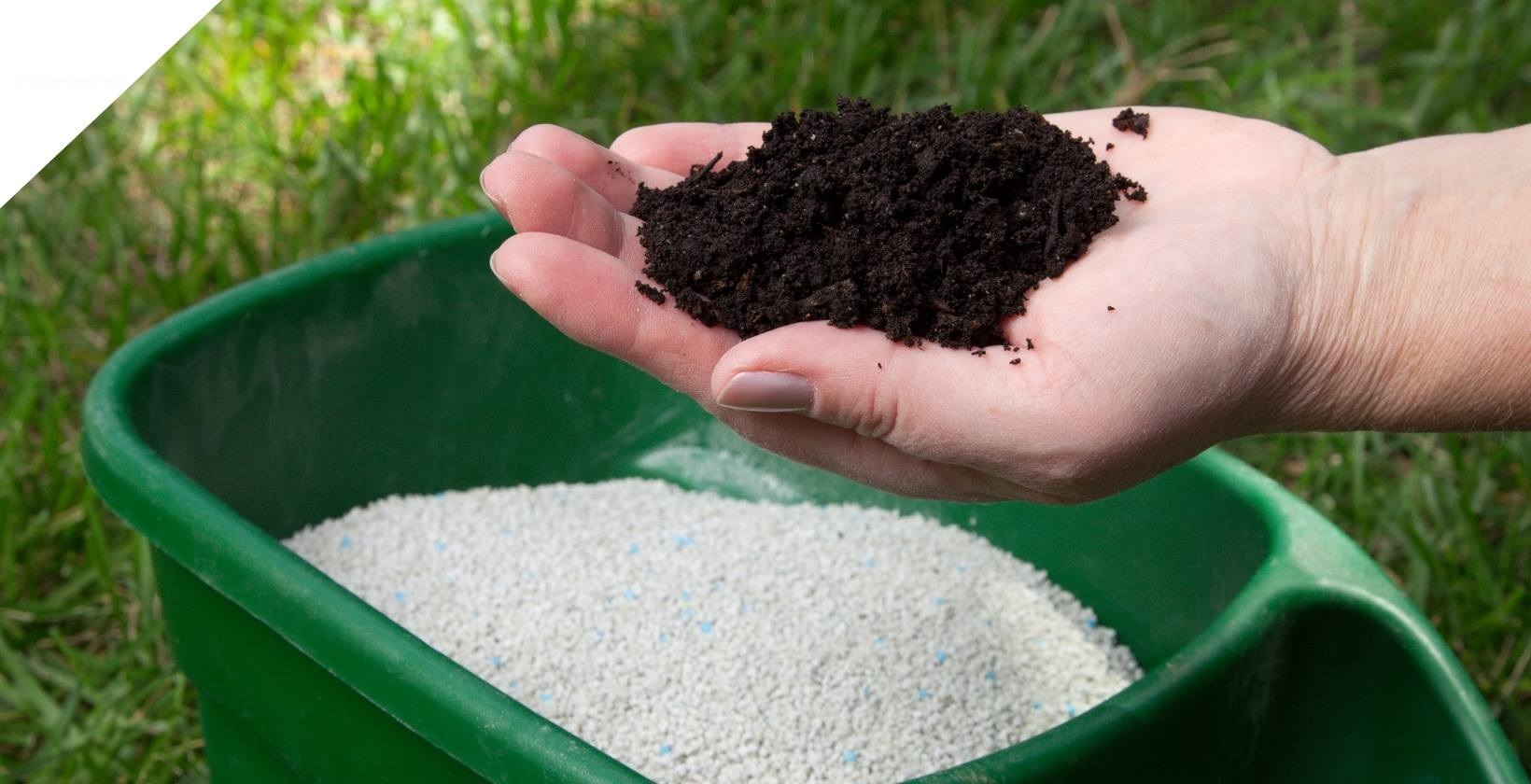
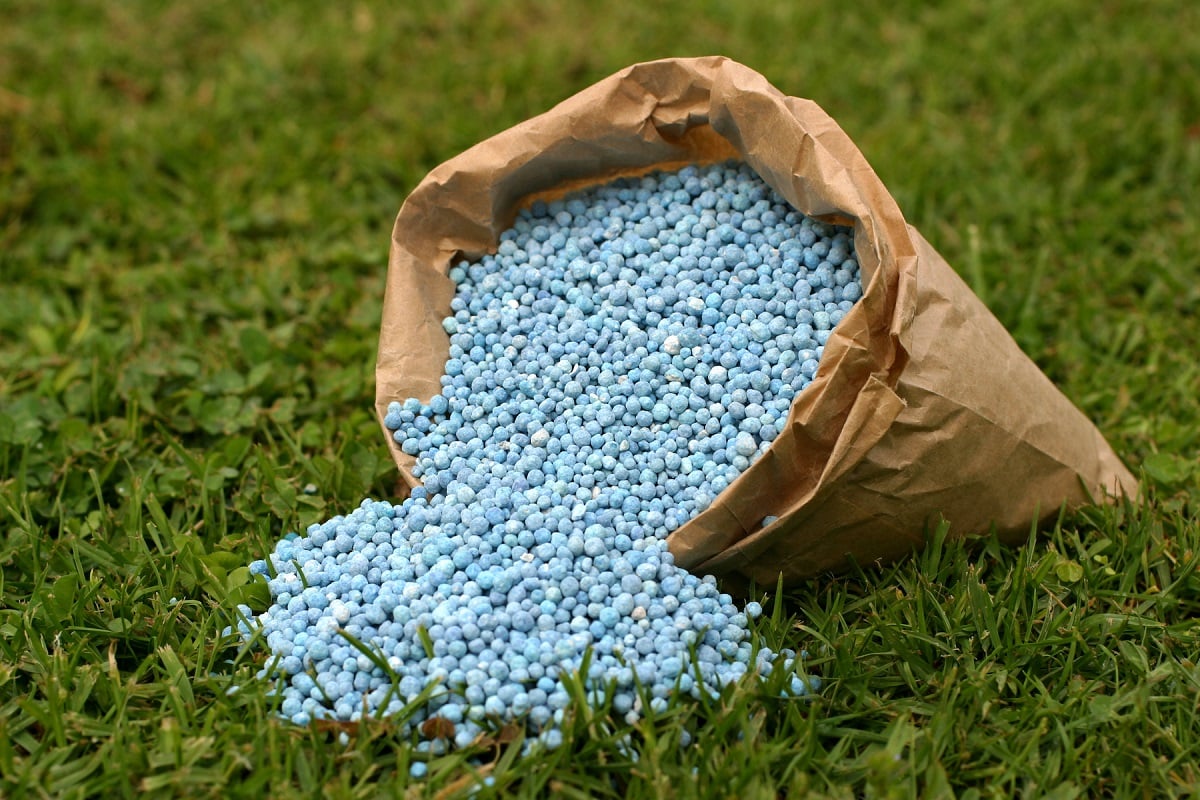


0 thoughts on “What Is A Slow Release Fertilizer”